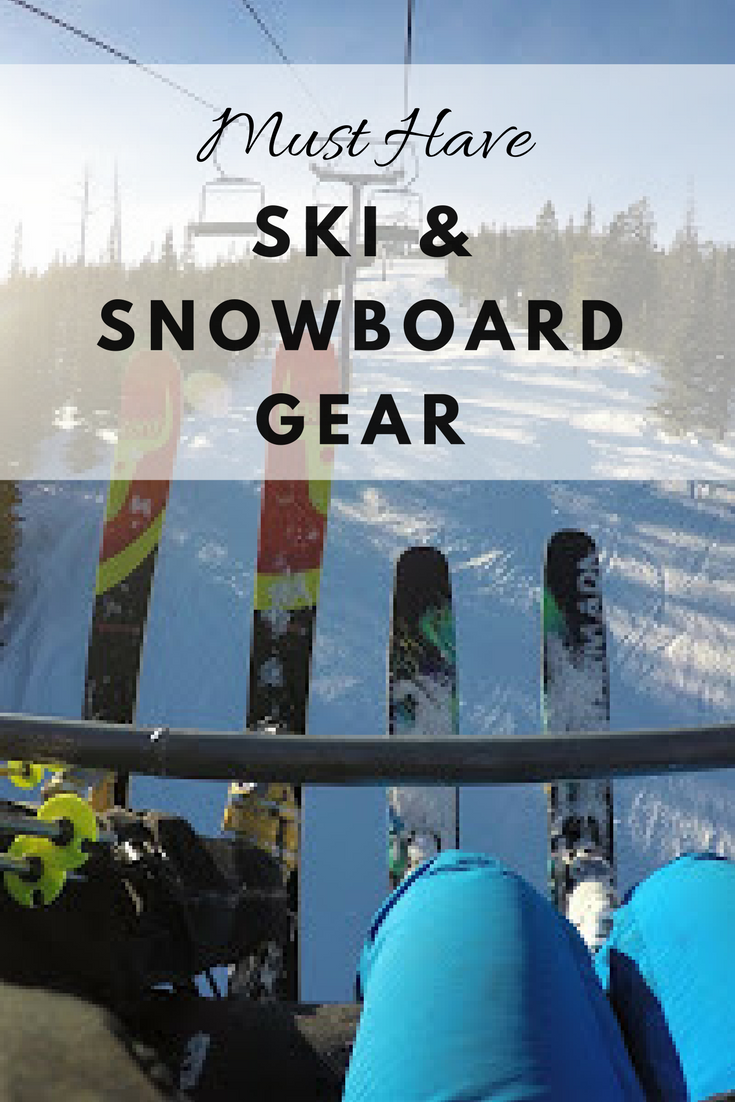Table of Contents
1) Cover Your Bases
Base layers: Since base layers are worn right next to the skin, it’s important that they be made of moisture wicking, breathable fabric. Synthetic or merino wool is the way to go; avoid cotton as it retains moisture.
Tip: If you like the anti-odor quality of merino wool, but can’t tolerate having it right next to your skin (it’s way too itchy for me), try double layered base layers like Helly Hansen Warm Ice / Freeze base layers (merino on the outside & no itch LIFA polypropylene on the inside). They feel as good as they look! I like them so much, I bought some for my husband too. Note: The HH Warm Freeze tops fit a bit tight. The pants are true to size.
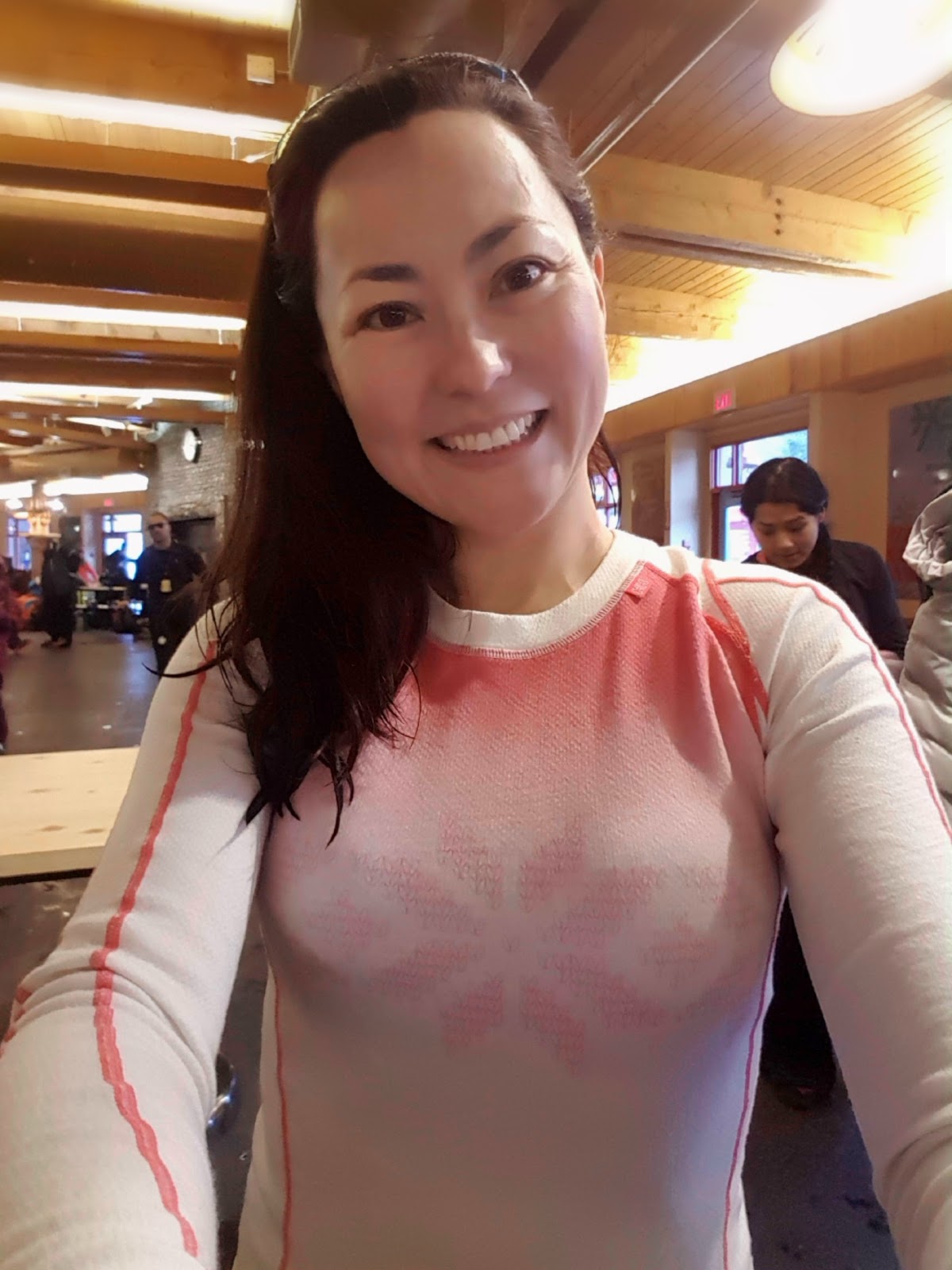 |
| Helly Hansen Women’s Warm Ice Top – Available at Sport Chek (Note: this color discontinued – I bought it a few years ago, but there are several new fun patterns!) |
Socks: Wool blend socks with elastane for stretch and nylon for durability will keep their shape, last a long time, provide warmth, inhibit bacterial growth (and stink), and wick moisture to prevent blisters. Once I discovered good technical socks, I stopped getting blisters all the time. A couple brands I’ve tried and like are SmartWool and Icebreaker. As they are a bit pricey, wait for a sale and then stock up!
Play Outside Guide recommended base layers and socks:
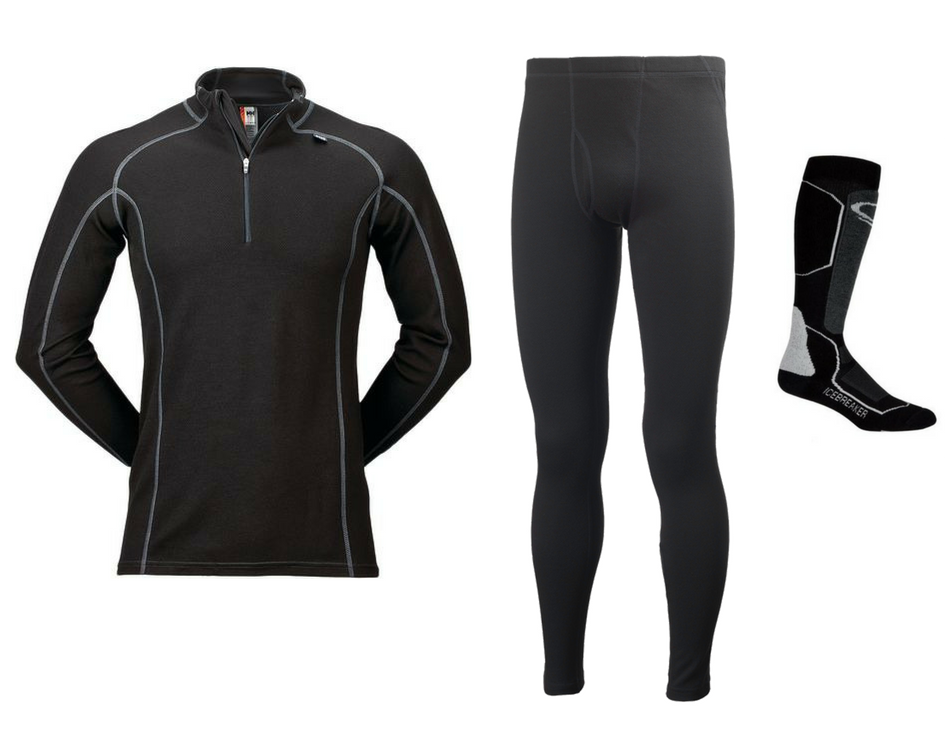 |
| Helly Hansen LIFA Freeze Men’s 1/2 Zip Top, Helly Hansen Warm LIFA Men’s Pants, Icebreaker Men’s Skier Over-the-Calf Socks available from Sport Chek. (also available in women’s) |
2) Midlayers
It’s preferable to wear layers – for example: technical base layer, light fleece, and shell – on a cold day vs a super thick jacket because conditions change during the day. When it warms up in the afternoon, you can easily shed a layer to stay at the optimal temperature.
The most affordable midlayer is a fleece top or jacket. They come in light weight, midweight and heavy weight. Once you’ve decided on the proper weight (light or medium is good for layering), look for 1) synthetic material (no cotton!), 2) half zip or full zip style with a chin guard, and 2) hoodless (to save bulk; they also collect snow). I personally love pockets in my jackets, but for layering, most people prefer no pockets to minimize bulk and weight. Choose what works for you!
Other midlayer options include vests and down sweaters. Vests (down or synthetic) keep your core warm without the bulk of long sleeves, and are suitable for mild temperatures. Down sweaters are good for cold days as they provide lots of warmth for their weight and are highly compressible (especially if you get higher count down). Primaloft is a lower maintenance alternative to down (though slightly less compressible).
May we suggest…
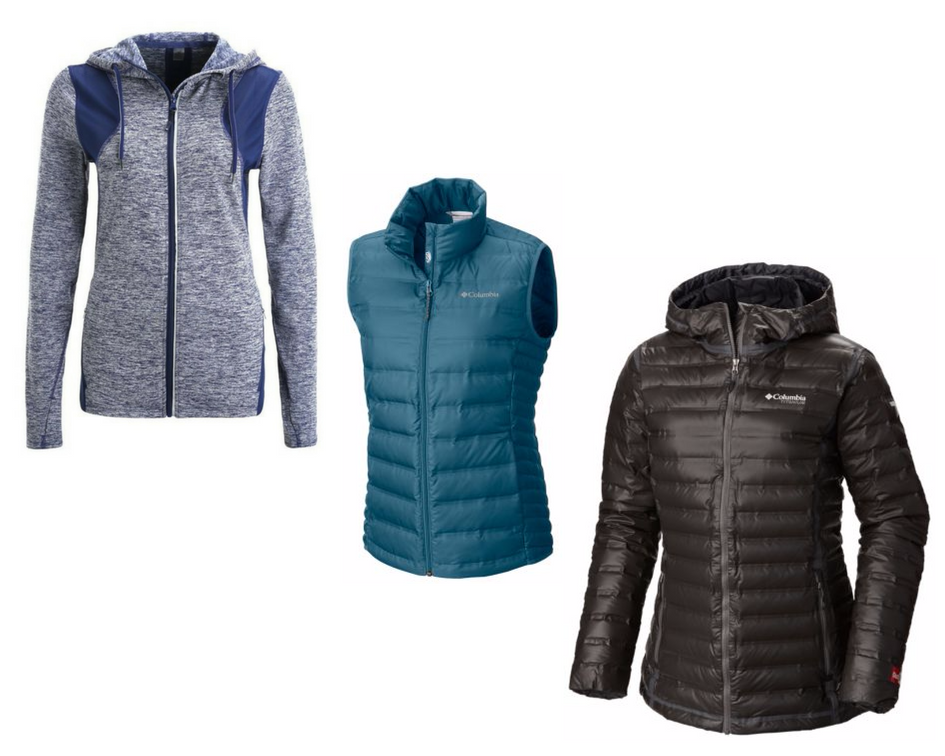 |
| Fitness Roxy Women’s Baylee Fleece Full Zip Hoodie (chin guard and thumb holes), Columbia Women’s Lake 22 Down Vest (650 fill power down), Columbia Titanium OutDry EX Gold Women’s Down Jacket (700 fill power down) |
3) Outerwear
Outer layers should be windproof, waterproof, and breathable so you can stay dry whether you work up a sweat or sit in wet snow. Goretex is the best known waterproof-breathable fabric but there are several proprietary fabrics with similar qualities. Examples include Helly Hansen’s Helly Tech, Columbia’s OmniTech, Northface’s HyVent, and Patagonia’s H2No.
 |
| We love our Helly Hansen Women’s Legendary Insulated Pants (left) and Helly Hansen Kids’ Powder Winter Bib Pants. We purchased these a few years ago and are not affiliated with Helly Hansen. |
Hard Shell vs Soft Shell vs Insulated
Backcountry enthusiasts prefer hard shell (e.g. Goretex) jackets and pants because they offer the best weather protection. While hard shells tend to be expensive, they last a long time. Another plus is that shell jackets can be used year round in our climate.
Soft shell outerwear is very comfortable as it has stretch and moves with you. Soft shells tend to be fairly water resistant and windproof, but may not be the best choice if you’re learning to ski in wet snow (they shed water well but if you sit/fall in wet snow, water will seep in).
Insulated outerwear is a convenient option for cold weather as you can put it on over one layer and skip the midlayer unless it’s ridiculously cold. The downside, however, is that you have less control over temperature (but vents can help a lot). Down is super warm for its weight and is highly compressible and light, so it’s my favorite fill, but Primaloft is also quite light and warm.
Ski / Snowboard Jacket – What to Look For
In addition to windproof, waterproof, and breathable material, look for: vents (pit zips), adjustable helmet compatible hood with brim, 2-way (dual) zipper, sealed seams, and chin guard, zippered pockets. Nice to have: removable powder skirt and/or modular system to attach jacket to pants to keep snow out.
Tip: 3-in-1 jackets (midlayer and outer layer that zip together) are versatile and often more affordable than buying a shell and midlayer separately. Try before you buy to make sure they integrate well.
 |
| The Helly Hansen Men’s Juniper II Alpine Jacket is a windproof, waterproof, breathable lightly insulated shell with vents. |
Ski/Snowboard Pants – What to Look For
In addition to windproof, waterproof, and breathable material, look for: vents (inner or outer thigh zips), stretch boot gaiters, adjustable waist, sealed seams, lower leg zips to allow easy boot changing, articulated knees for movement, zippered side pockets. Nice to have: modular system to attach jacket to pants to keep snow out.
I have goretex bib pants for backcountry trips (bib pants keep warmth in and snow out), and insulated ski pants for family resort skiing. The insulated pants are more affordable, but the hard shell pants are more versatile.
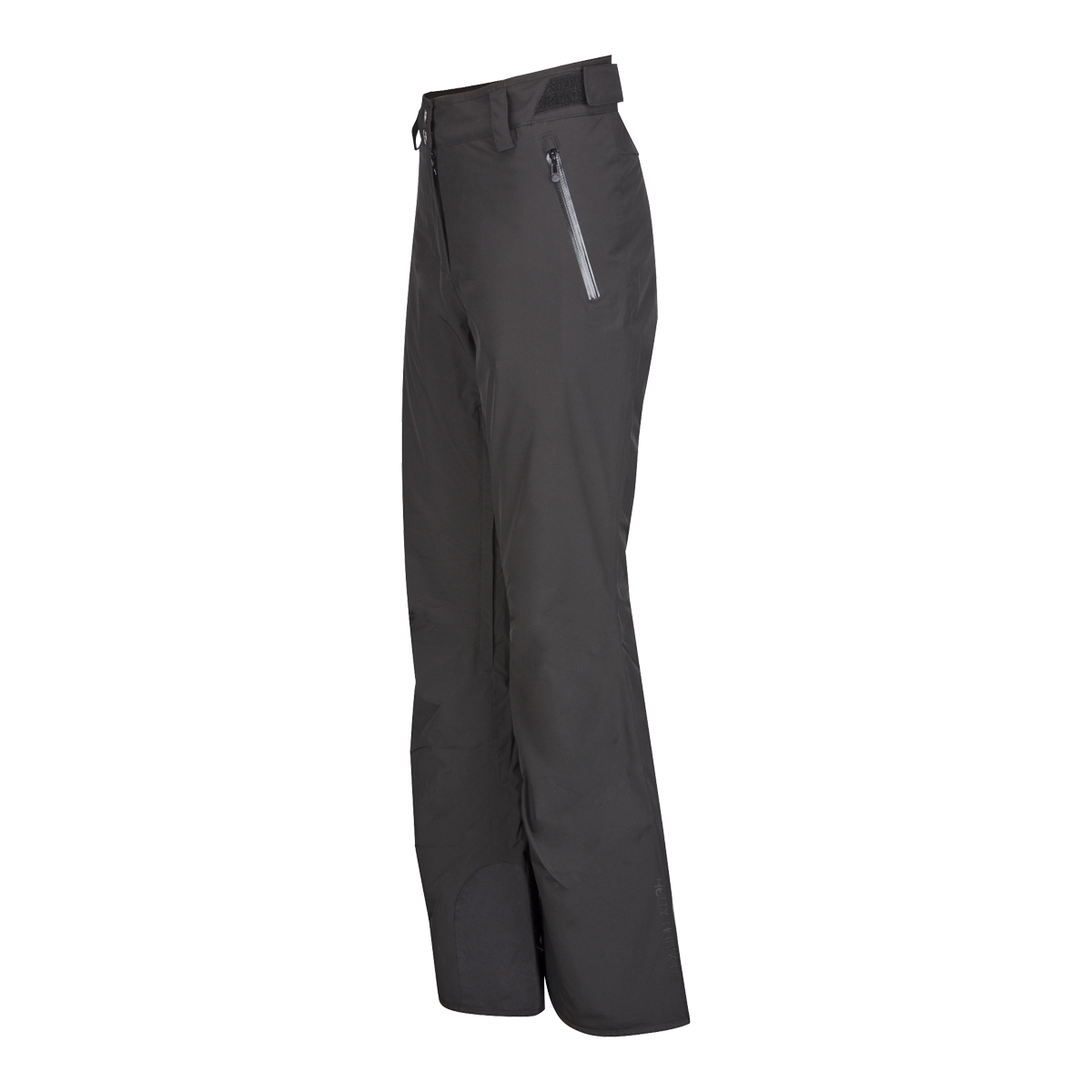 |
| Helly Hansen Legendary Insulated Pants available in men’s and women’s from Sport Chek. I bought these in 2014 and they are still waterproof! |
4) Head Gear
No Helmet, No Ride (or Ski)!
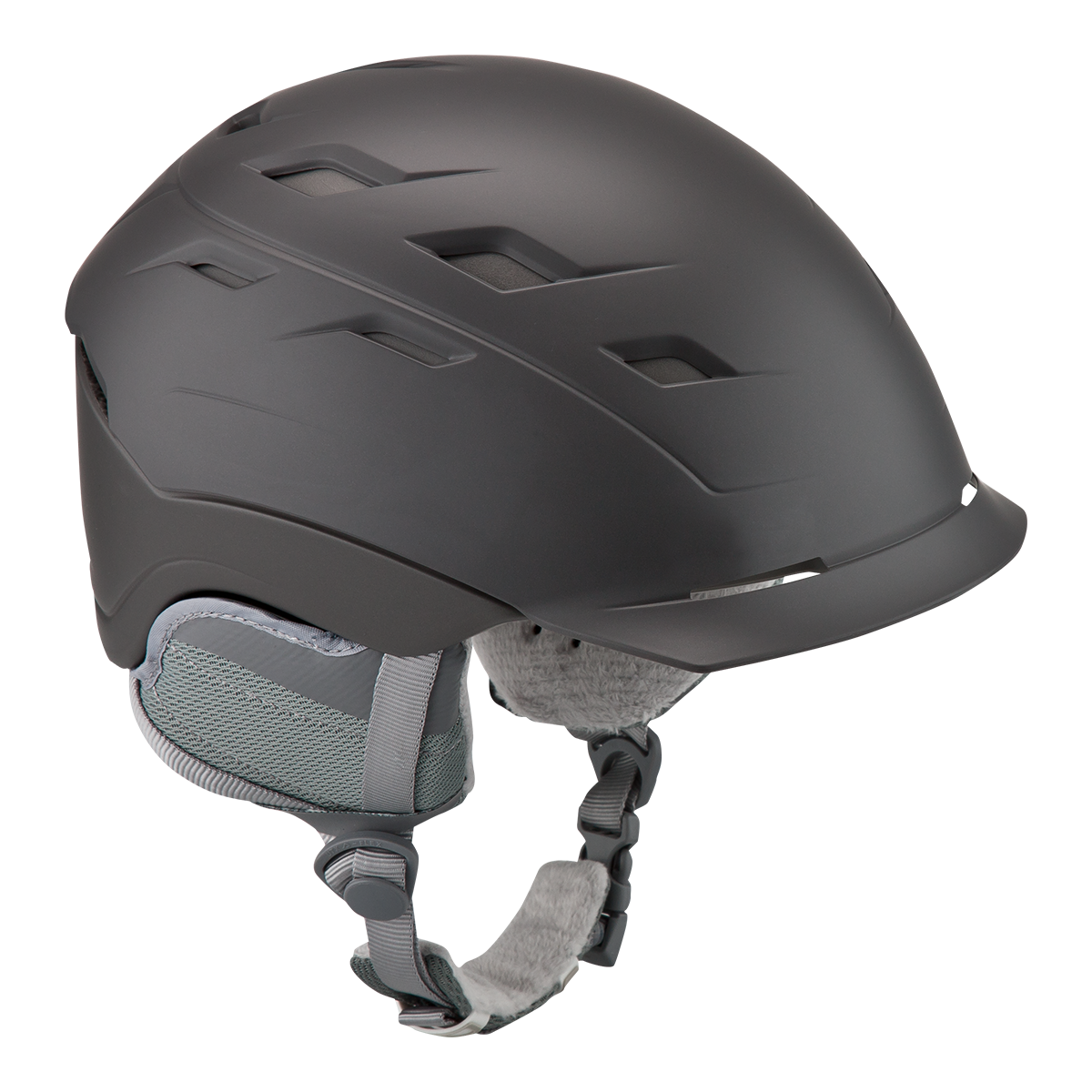 |
| Smith Valence Helmet available at Sport Chek |
What to look for: vents, adjustable fit (spin dial in the back is quick and easy), soft antimicrobial lining, goggle compatibility, easy to adjust straps, visor/visorless design is up to you. If two helmets are similar, choose the one that provides the most protection (hard sided and hard shelled are better than in-mold designs).
I strongly recommend the Smith Valence (women’s) or Smith Variance (men’s) for fit, ventilation and weight. The Valence (shown at left) is the 2nd Smith Helmet I’ve purchased because it fits so well.
Goggles
Goggles protect your eyes without fogging up, and stay in place (though I often ski in prescription sunglasses when I don’t want to wear contact lenses). Try before you buy to ensure they are compatible with your helmet’s shape and vents, and offer a wide field of view.
There should also be no “gaper”gap between your helmet and goggles.
While many companies make helmets and goggles that are compatible, you can mix and match brands (but try them on together to be sure). I have two pairs of Bolle goggles that work well with my Smith helmet.
What to look for: fit, helmet compatibility, anti-fog coatings
Nice to have: interchangeable lenses and extra lenses for different conditions (e.g. a light lens and dark lens)
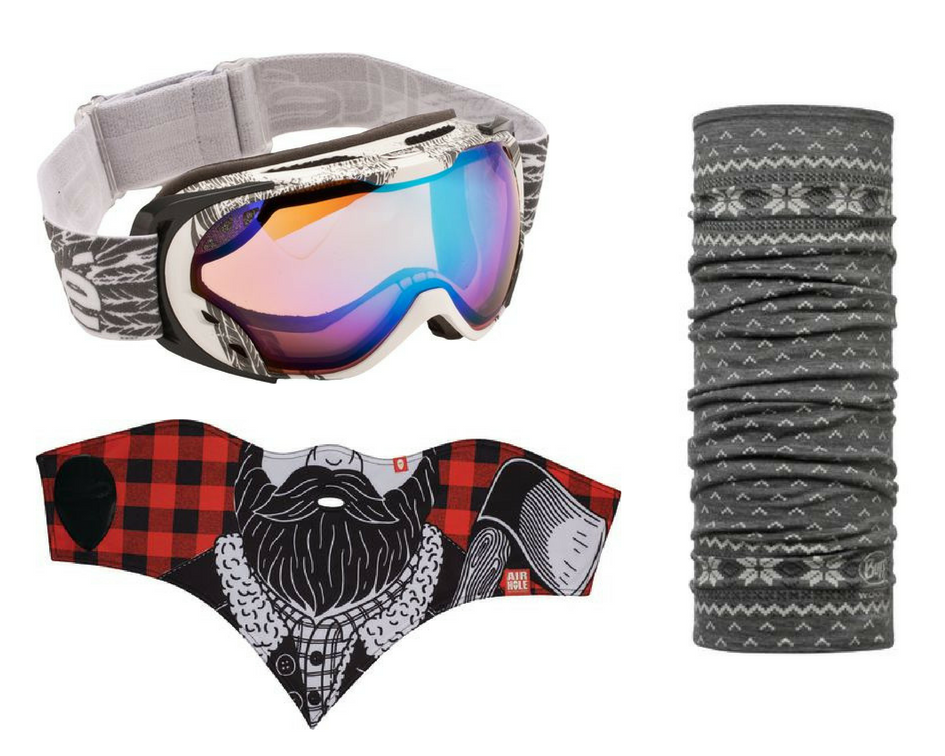 |
| Clockwise from top left: Bolle Duchess Women’s Snow Goggles, Buff Merino Wool Neck Tube, Airhole 2-layer Standard Ski Mask |
Ski Mask or Buff and Beanie (or Balaclava)
Powder days are usually chilly, so be prepared with a neck tube (that can be pulled up to protect your face), balaclava, or specialty ski mask. Masks with breathing vents are great for the days where you need to cover your face so you don’t get as much condensation and ice.
When it’s nippy out (below -15C), a beanie helps keep that tiny line between your goggles and helmet warm. Try on a thin technical beanie when purchasing your helmet.
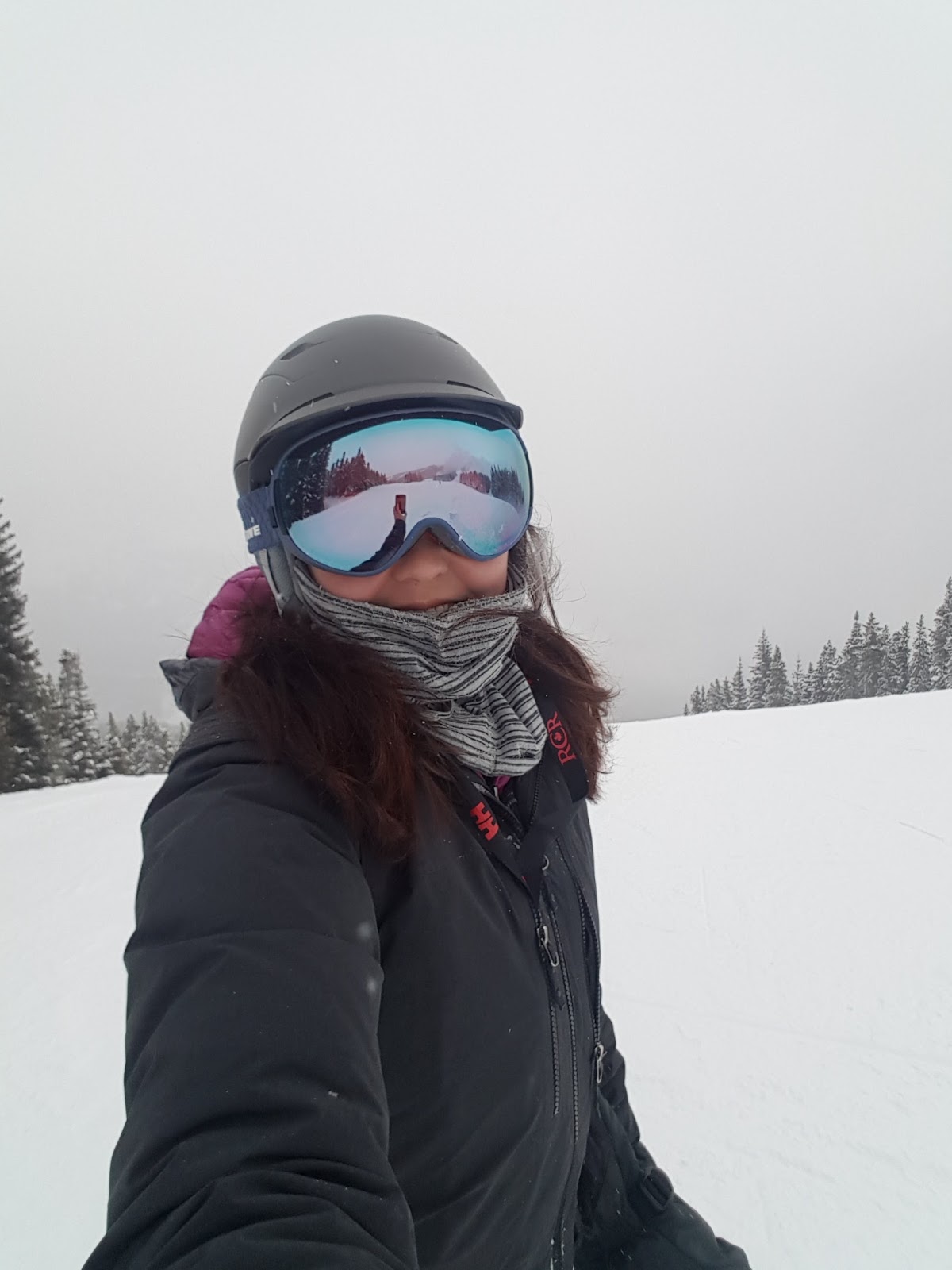 |
| Skiing in -20C (-30 with windchill)! Smith Valance helmet, Merino wool Buff shown |
5) WARM HANDS = HAPPY RIDERS
Insulated gloves are great for dexterity, but you can’t beat mitts when the mercury dips below -15.
Look for: leather palms for durability; high quality fill (down or primaloft); windproof, water-resistant, breathable shell; long gaiters with drawstrings and stretchy cords with toggles to keep warm air in and snow out; and breathable liners to prevent hands getting sweaty.
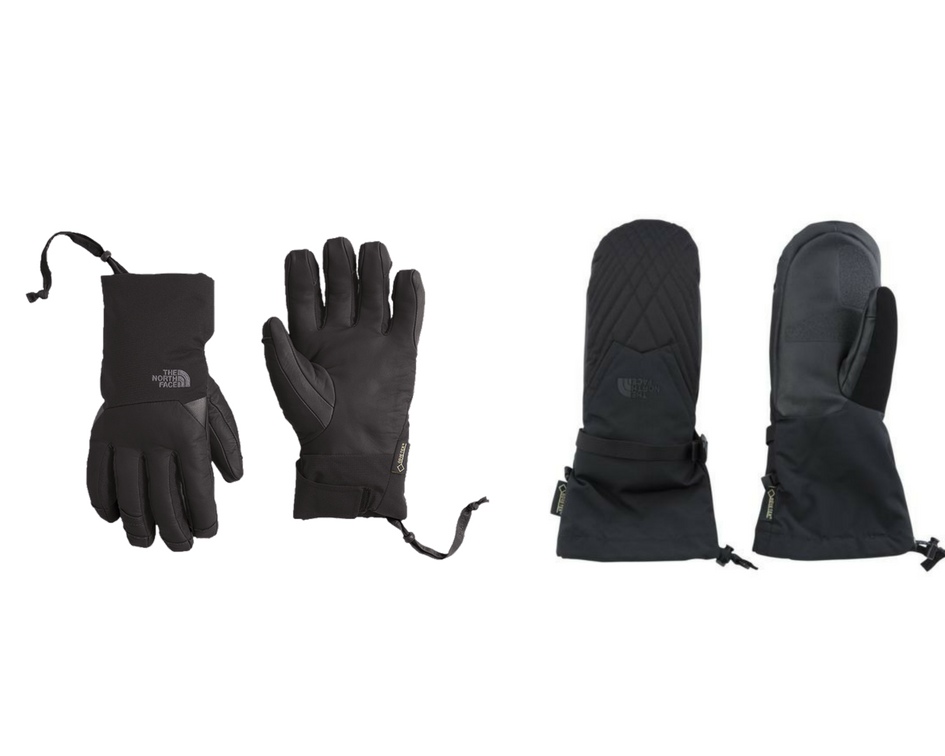 |
| North Face Patrol Gloves and North Face Montana Mitts |
Top picks: The North Face Himalayan Men’s Mitts (premium cold weather down fill mitts), The North Face Men’s Patrol Gloves (short gauntlet gloves with 200 g Primaloft Gold fill), and The North Face Women’s Montana Gore-tex Mittens (Goretex and HeatSeeker insulation).
6) Ski & Snowboard Gear
There are a lot of choices when it comes to skis, snowboards, bindings, and boots so it’s good to do some research before you go to the store so you can narrow down your options. First things first, you should know your height, weight, skiing/snowboarding ability, and terrain you plan to ski/ride (groomers, backcountry, all mountain).
A good ski/snowboard shop can outfit you with equipment that fits properly for your comfort and safety. To save money, check the sale rack first and look for package deals. I’ve seen women’s skis and bindings as low as $268!
Here are some articles from Sport Chek on choosing ski and snowboard gear:
- Choosing and Fitting Ski Boots
- Choosing the Right Skis
- Choosing the Right Snowboard Boots
- Choosing the Right Snowboard
 |
| K2 Konic 76 Men’s Alpine Skis and K2 Pinnacle 110 HV Men’s Ski Boots |
Conclusion
I hope this ski and snowboard clothing and gear guide helps you have an amazing season on the slopes! What’s your number one must-have snowboard or ski gear item?
RELATED POSTS: Where to Ski or Snowboard Near Calgary
- Why You Need a Nakiska Season’s Pass
- Fun Family Skiing at Mount Norquay
- Destination: Castle Mountain Resort, Alberta
- Cat Skiing at Castle Mountain

